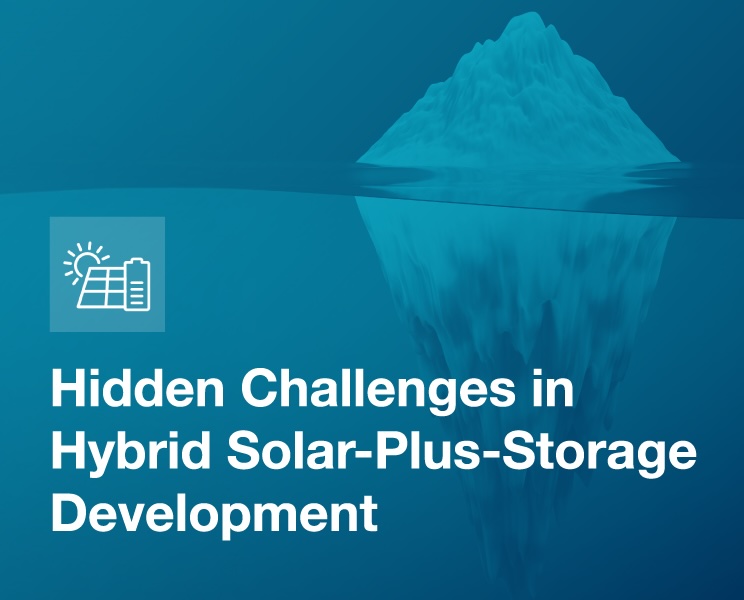Solar-plus-storage isn’t just growing—it’s becoming the standard. Over half of the US solar interconnection queue is now paired with storage. In CAISO, that figure reaches 98%. The market has spoken.
But here’s the thing: hybrid projects are fundamentally different from standalone solar. They require different operational approaches, different control architectures, and different expertise. Yet many developers discover this during commissioning—when integration takes months instead of weeks—or after commercial operation starts, when performance doesn’t match projections.
How do you design hybrid systems that actually deliver on their economic potential? What control architecture decisions made during development determine whether you qualify for premium grid services or struggle with coordination issues? When should you build operational capabilities internally versus partnering with specialized providers?
That’s why we’re introducing Hidden Challenges in Hybrid Solar-Plus-Storage Development, a new series that unpacks the operational and control architecture considerations that often go overlooked during development but directly impact project performance.
What You Can Expect from the Series
This isn’t about problems without solutions. It’s about surfacing the considerations that experienced operators know matter—and providing practical frameworks to help you address them during development, when you still have options.
Each article combines technical insights with strategic guidance to help you make informed decisions for your hybrid projects.
Our upcoming articles will explore:
Utility-Scale Hybrid Operations: The Development Decisions That Matter – Why hybrid operations require different approaches than standalone solar, and the strategic considerations that affect outcomes.
Three Control Architecture Decisions That Determine Hybrid Performance – The architectural choices that shape commissioning timelines, grid service capabilities, and long-term performance.
Multivendor Coordination – How to navigate integration when PV manufacturers, BESS suppliers, and grid operators each have different control philosophies.
The Grid Services Gap – Understanding why systems designed for standalone assets struggle to optimize hybrid resources, and what unified hybrid intelligence looks like.
Control Layer Complexity – How control architecture affects response times, grid service qualification, and revenue opportunities.
A Developer’s Framework for Control Architecture Decisions – A practical guide for evaluating control approaches based on your project requirements and goals.
Why It Matters Now
The hybrid market is maturing rapidly. But as the market matures, the performance gap between well-designed and poorly-designed systems is becoming more apparent.
Industry data shows specific patterns: integration complexity that extends commissioning timelines, coordination gaps that persist after COD, and architectural decisions that limit which revenue streams projects can access. The good news? Most of these challenges can be addressed through informed decision-making during development.
Whether you’re planning your first hybrid project or optimizing a portfolio of existing assets, understanding these considerations helps you ask better questions, evaluate options more effectively, and design systems that perform as intended.
Stay Tuned
We’ll kick off next week with Utility-Scale Hybrid Operations: The Development Decisions That Matter, examining what makes hybrid operations different and the key strategic considerations for building your operational approach.
Follow along at stem.com/insights-library/ to catch each new article. And if you’re navigating these decisions on a current project, we’d be glad to discuss your specific requirements.
The path to successful hybrid development starts with knowing what questions to ask. The challenges may be hidden, but the solutions don’t have to be.
